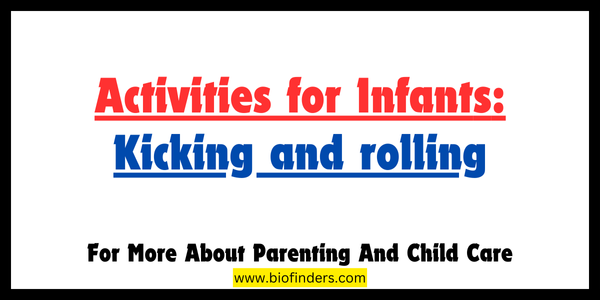Watching your baby develop is a magical experience.
This blog is your guide to nurturing your baby’s natural movement patterns through engaging activities for infants. We’ll explore the importance of kicking and rolling, how to encourage these skills, and answer common parental concerns.
Activities for infants : Why Kicking and Rolling Matter
Kicking and rolling are more than just playful movements. They’re crucial building blocks for future physical development. Here’s how:
- Muscle Strength: Kicking strengthens leg muscles, essential for crawling, standing, and eventually, walking. Rolling works core muscles, which provide stability and coordination for all physical activities.
- Sensory Development: Kicking and rolling allow babies to explore their bodies and surroundings in new ways. They learn about spatial awareness, cause-and-effect, and different textures.
- Brain Development: Movement stimulates neural pathways in the brain, promoting overall cognitive development, hand-eye coordination, and problem-solving skills.
- Preparation for Crawling: Rolling is a precursor to crawling. As babies master rolling, they’ll build the strength and coordination needed to propel themselves forward.
Activities for Infants: Encouraging Kicking and Rolling
Activities for infants: Tummy Time:
This is the golden standard for encouraging kicking and strengthening neck and upper body muscles. Here’s how to make tummy time enjoyable:
- Start Early: Introduce tummy time from birth for short periods (a few minutes at a time) and gradually increase the duration as your baby gets stronger.
- Create a Comfortable Environment: Place your baby on a soft playmat on the floor. Ensure the area is free from clutter and hazards.
- Engage Your Baby: Get down to their level, talk in a soothing voice, sing songs, or hold a brightly colored toy just out of reach to encourage them to push up and reach.
Activities for infants: Tummy Time Variations:
- Mirror Time: Place a mirror face-down under your baby’s chest during tummy time. They’ll be captivated by their reflection, motivating them to lift their head for longer stretches.
- Prop Them Up: If your baby struggles with tummy time initially, roll a small towel and place it under their chest for gentle support.
Activities for infants: Playful Prodding:
- Gently stroke the soles of your baby’s feet with your fingers or a soft toy. This natural reflex will trigger kicking movements.
- Place a colorful ball just out of reach and encourage them to kick it.
Rolling Games:
- Place Favorite Toys: Place a favorite toy slightly beyond your baby’s reach on their side. This might entice them to roll towards the toy.
- The “Log Roll”: Gently guide your baby from their back to their side and then to their tummy, demonstrating the rolling motion.
Important Safety Tips:
- Always Supervise: Never leave your baby unattended during playtime, especially during tummy time or when they’re close to rolling.
- Provide a Safe Space: Ensure the play area is free from sharp objects or furniture with hard edges.
- Respect Their Pace: Every baby develops at their own pace. Don’t force rolling or any other movement.
- Seek Guidance: If you have concerns about your baby’s development, talk to your pediatrician.
Activities for Infants with Torticollis
If your baby has torticollis (a condition that causes them to favor turning their head in one direction), consult your pediatrician for specific exercises to help them develop proper neck strength and overcome this limitation. There may be modifications to the activities mentioned above that can be helpful.
Remember: Playtime is a joyful experience for both you and your baby. Focus on creating a stimulating and loving environment that encourages exploration and celebrates their natural movements.
Additional Tips for Supporting Movement Milestones
- Provide Plenty of Floor Time: Limit time spent in bouncy chairs or swings. Floor time allows for freedom of movement and exploration.
- Wear Loose Clothing: Tight clothing can restrict movement, so opt for comfortable, loose-fitting clothes for your baby.
- Embrace Different Positions: Don’t always hold your baby in an upright position. Allow them time on their back, tummy, and sides to develop different muscle groups.
- Make it Fun! Laughter and positive reinforcement will keep your baby engaged and motivated to explore their world through movement.
Conclusion
Kicking and rolling are exciting early signs of your baby’s physical development. By providing them with opportunities for safe exploration and engaging activities for infants, you can






Leave a Reply